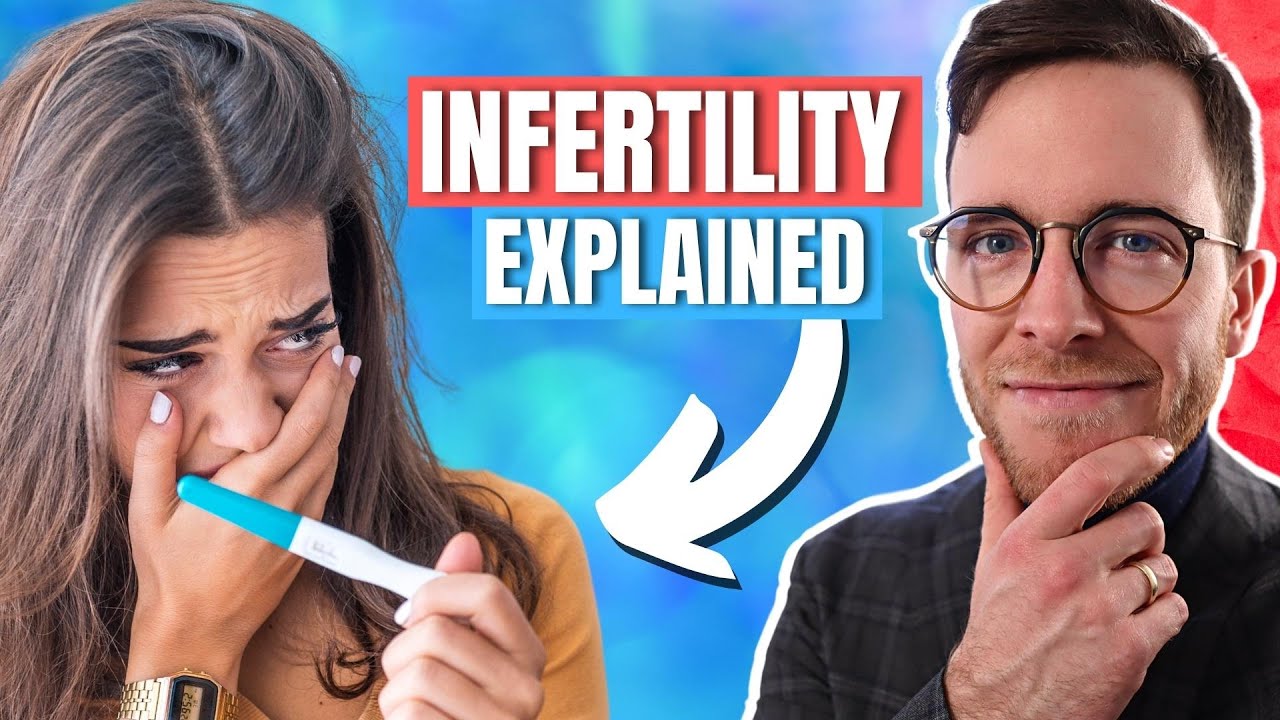Exploring Different Treatment Options For Female Infertility
A woman is considered infertile if she hasn't been able to get pregnant for a year or more while having regular, unprotected sexual activity. Female infertility can be caused by a number of things, such as getting older, health problems, hormonal imbalances, and living an unhealthy lifestyle.
Author:Katharine TateReviewer:Karan EmeryJan 23, 2023164 Shares2.2K Views

A woman is considered infertile if she hasn't been able to get pregnant for a year or more while having regular, unprotected sexual activity. Female infertilitycan be caused by a number of things, such as getting older, health problems, hormonal imbalances, and living an unhealthy lifestyle.
About a third of the time, female infertility is caused by female causes, and about one third of the time, it is caused by both male and female factors. In the other situations, the reason is either confounding male and female variables or is unknown.

Female Infertility Explained - Causes, Tips and Treatment
How To Test If A Woman Is Infertile
The likelihood of female infertility is evaluated as part of a comprehensive physical checkup. The examination will include a medical history addressing probable infertility-causing causes. Medical professionals may use one or more of the following tests or examinations to find out if a woman is fertile:
- A urine or blood test is used to detect infections or hormone issues, such as thyroid function.
- Pelvic and breast examination
- A sample of cervical mucous and tissue is used to assess ovulation.
- Insertion of a laparoscope into the belly to examine organs and search for blockages, adhesions, or scar tissueDuring hysterosalpingography (his-tur-o-sal-ping-GOG-ruh-fee), X-ray contrast is injected into the uterus, and an X-ray is obtained to examine the uterus for any abnormalities. The test also reveals if the fluid leaves the uterus and exits the fallopian tubes. If any issues are discovered, you will likely need more assessment.
- Ovarian reserve testing determines the quantity and quality of eggs available for ovulation.This battery of blood and imaging tests may be given to women, especially those over 35, who are at risk of having fewer eggs.
- During hysteroscopy, a little telescope with a fiber light is used to detect uterine anomalies.sonography to examine the uterus and ovaries. Possible to perform vaginally or abdominally.
- Sonohystograms combine ultrasonography with saline injections into the uterus to detect anomalies or issues.
- Mutations in your DNA, which can be found with genetic testing, could be the cause of your inability to have children.
Types Of Infertility In Females
Female infertility may be divided into two types:
- Primary infertility: It is a condition that affects couples who have been sexually active for at least a year without using any kind of birth control.
- Secondary infertility: It occurs when a couple has been able to have children before but now has trouble getting pregnant.
Female Infertility Treatment
The treatment for female infertility depends on the underlying cause, age, duration of infertility, and personal opinions. As infertility is a complicated condition, its treatment requires substantial financial, physical, emotional, and time sacrifices.
Your doctor may treat female infertility after identifying the reason. Infertility causes determine therapy. Surgery may fix structural flaws, while hormones can fix others (ovulation issues, thyroid conditions).
Many patients need artificial insemination or in vitro conception (fertilizing eggs with sperm in the lab to make embryos, then transferring the embryo into the uterus). Infertile women may consider adoption or gestational surrogacy.
Fertility Drugs
Ovulation is induced by follicle-stimulating hormone and luteinizing hormone, two naturally occurring hormones that are chemically mimicked by fertility medicines. Ovulating women use them too, in the hopes of getting a better egg or an additional egg.
- Clomiphene:This oral medication induces ovulation by increasing pituitary gland FSH and LH, which develop an egg-containing ovarian follicle. Non-PCOS women under 39 usually start with this.
- Gonadotropins:Injections promote ovarian egg production. Menopur and FSH are gonadotropins (Gonal-F, Follistim AQ, Bravelle).
- Gonadotropin:Human chorionic gonadotropin (Ovidrel, Pregnyl) matures and releases eggs upon ovulation. Gonadotropin usage may increase the chance of multiples and preterm birth.
- Metformin:In PCOS-diagnosed women, this medication treats insulin resistance-related infertility. Metformin (Fortamet) improves insulin resistance and ovulation.
- Letrozole:Letrozole (Femara) is a member of the family of medicines known as aromatase inhibitors and functions similarly to clomiphene.
- Bromocriptine:When the pituitary gland overproduces prolactin (hyperprolactinemia), bromocriptine (Cycloset, Parlodel), a dopamine agonist, may help ovulation.
Surgery
Several surgical treatments may address issues or enhance female fertility in different ways. However, surgical fertility treatments are uncommon nowadays owing to the effectiveness of other therapies. They consist of:
Laparoscopic or hysteroscopic surgical procedures:Corrections to the uterine anatomy, removal of endometrial polyps and certain kinds of fibroids that distort the uterine cavity, and removal of pelvic or uterine adhesions may be performed during surgery.
Tubal surgeries: Your doctor may propose laparoscopic surgery to remove adhesions, dilate a tube, or construct a new tubal opening if your fallopian tubes are obstructed or filled with fluid. In vitro fertilization often results in higher pregnancy rates than this procedure (IVF). The removal of your tubes or occlusion of the tubes near the uterus might increase your chances of conceiving with in vitro fertilization.
How Homeopathy Treats Female Infertility
Homeopathy is the finest option for treating female infertility since it is safe, painless, and inexpensive. Homeopathy is becoming more popular as more and more parents look for ways to deal with the stress of being parents. To cure female infertility with homeopathy, all you need is a little bit of time.
Homeopathic therapy for female infertility often takes at least three to four months to bear fruit. To help you conceive, we provide constitutional drugs and suggest nutritional supplements.
- Infertility may be effectively treated with homeopathy for a variety of female reproductive disorders.
- Your reproductive health will be restored and your mental issues will be resolved thanks to homeopathy. Ovulation is promoted and healthy eggs are produced as a result.
- Avoiding the major contributors to female infertility—alcohol, tobacco, and drug use—is another benefit.
- In homeopathy, infertility in women is seen not as a disease but as a natural variation. Because it addresses the underlying source of the problem, it may help you conceive. It also promotes the body's own healing mechanisms.
- The use of homeopathic remedies for infertility has been shown to increase fertility. If you see a homeopath, you may expect to get top-notch constitutional treatments tailored to your unique genetic profile.
People Also Ask
What Is The Most Common Infertility Issues In Females?
In 40% of women with infertility concerns, the inability to ovulate is the most prevalent cause of infertility. Not ovulating may be caused by a variety of factors, including conditions affecting the ovary or gynecology, such as primary ovarian insufficiency (POI) or polycystic ovary syndrome (PCOS)
How Is Female Infertility Treated?
Fertility medicines are used to control or promote ovulation to treat women with ovulation abnormalities who are infertile. To induce ovulation, fertility medicines often function similarly to the natural chemicals follicle-stimulating hormone (FSH) and luteinizing hormone (LH).
Which Is The Most Common Cause Of Female Infertility?
Ovulation issues are the most prevalent cause of infertility in women. Age, hormone imbalances, body mass index, exposure to toxins or radiation, and cigarette smoking all influence a woman's fertility.
Final Words
After the age of 35, female infertility and miscarriage rates grow considerably. Women in their twenties now have choices for early egg retrieval and preservation. This will increase the likelihood of a successful pregnancy if childbearing is postponed until beyond the age of 35. This is a costly choice. However, women who are aware of the necessity to postpone pregnancy may consider it.

Katharine Tate
Author

Karan Emery
Reviewer
Latest Articles
Popular Articles